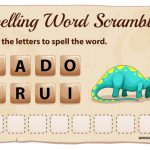When kids start writing and drawing, using the right pencil grip is essential to their progress. An awkward or ineffective grip can cause hand fatigue, clumsy labour, and frustration, which might deter your child’s innate artistic passion. Early habit formation is key to avoiding issues later on. You may assist your youngster in learning how to hold a pencil in a comfortable and useful way with some easy instructions.
Where to Start:
Begin by selecting appropriate writing tools. Look for larger pencils or crayons with triangular shafts. These fit better in a child’s hand compared to standard-sized writing utensils designed for adults. Greater control is provided by the bigger surface area, and the triangle form promotes the proper three-finger grip. Alternatively, to make writing instruments simpler for little hands to hold, you may buy pencil grips that fit over standard writing instruments.
Observe your child’s natural grip style before jumping in to correct. There are a few common pencil holds you may notice. Some children use a full-fisted grip with the pencil held in their palms, and all fingers clenched around it tightly. Others opt for a four-finger grip, bracing the pencil against the side of the hand with the thumb crossed over the top. The ideal tripod grip uses the pads of the thumb, pointer finger, and middle fingers to stabilize the utensil.
Hand Placement Cues:
If your child utilizes one of the less efficient grips, there are some simple cues you can provide to guide them into using their hand muscles properly. Have them pretend they are going to shake hands with the pencil. This will automatically bring their pointer finger and thumb into the right position. Tell them to hold the pencil gently, like it is a small bug they do not want to squish. Providing sensory information about pressure encourages a light touch. You can also demonstrate the tripod grip yourself and have your child mimic how your hand looks.
For extra assistance, make a small bookmark-size model showing correct hand placement that your child can reference. Simple drawings of the thumb, pointer, and middle fingers in the tripod position are enough to visually cue proper positioning. Laminate the model or cover it in clear contact paper so it withstands repeated use. Provide lots of positive reinforcement, such as high-fives, cheers, and hugs, when you see your child using the appropriate grip, even if only for a few moments. This motivates them to repeat the desired behavior.
Troubleshooting Problems:
Pay attention to your child’s complaints about hand soreness or fatigue and observe their grip regularly to troubleshoot problems before they become ingrained habits. Gentle reminders to adjust hand positioning are useful, but take care not to constantly criticize as this may discourage drawing and writing practice.
If your child is reluctant to give up a four-finger or fist grip, try one finger at a time transition. Have them maintain the improper hold, but lift either the ring or pinky finger off first. This may feel more manageable. Over a few days, encourage lifting the remaining fingers until only the thumb, pointer, and middle digits are left gripping the pencil in the ideal tripod hold.
Making Accommodations:
While the tripod grip serves most children well, it does not work universally for all hand sizes and finger dexterity levels. Some children have smaller hands that fatigue easily when trying to manipulate a standard-sized writing tool, even with a grip aid. Consider letting your child use larger-diameter pencils or markers formulated for preschool-aged kids. These require less fine grasp control, so it’s easier to maintain a functional hold over longer periods.
If your child has hypotonia, motor delays, or muscle weakness, consult an occupational therapist to explore adapted pencil grips to accommodate their needs. Tools like the Hand Hugger fit on the end of pencils to provide a large, built-in surface for bracing the hand against. Other options like the Grotto Grip or the Pentel Contour Grip dispense with finger manipulation, utilizing the whole hand for control. Taking advantage of these supportive aids prevents fatigue while still letting kids participate in drawing and writing tasks right alongside peers.
Importance of Pencil Grip:
Beyond just being able to hold a pencil comfortably, having the correct grip provides additional benefits that impact a child’s writing skills. The right grip style enhances fine motor control, precision, and fluency of pencil strokes. It also reduces unnecessary hand and arm tension so kids can write for longer periods without fatigue.
With the balanced tripod grip, very subtle finger movements translate into precise strokes. The thumb, pointer, and middle fingers operate like tiny levers, moving the pencil minutely back and forth across the page. The remaining two fingers provide stabilizing support but do not restrict the versatility of strokes. This allows maximum maneuverability within a controlled hold.
Compare this to four-finger or whole-fist grips, where pencil manipulation depends on larger motions of the entire hand. While these holds seem powerful, they actually reduce manual dexterity and smoothness of pencil movements. With less flexibility, kids must grip harder and push rougher to make the marks they intend because their fingers cannot make subtle adjustments.
This quickly leads to tense muscles, sore joints, and tired hands. Cramping and discomfort then impact legibility as children rush to finish work and abandon good technique. Messiness often ensues when control breaks down. Without a tripod grip, children must work harder against their own body mechanics just to complete assignments.
Breaking Old Habits:
When a non-tripod grip has already been established, it can be challenging to break the habitual hold. Provide encouragement and highlight benefits rather than criticizing. Explain to your child that using their hand muscles in this new way will let them write faster and easier without getting sore. Share stories of how their work will become less tiring and look more neat.
You can turn it into a game, asking your child to see how lightly they can hold a pencil without dropping it. Have competitions to write letters or numbers with as few strokes as possible using only their fingers to wiggle the pencil. These playful activities reinforce proper positioning and build finger dexterity without feeling like regimented practice.
To motivate switching, allow your child to decorate and personalize their own pencil by adding decorative gems, stickers, or drawing designs on it. When they get to choose the aesthetics, they feel more connected to using the tool correctly. You can also designate a special notebook or art pad specifically for tripod grip work to make distinguishing the new technique feel special. If one grip style is for formal school writing and the other is for drawing superheroes, your child will more eagerly adopt the tripod technique.
Be Patient:
For some children, especially those with physical limitations, moving to a tripod grip can feel awkward, even painful, at first. Their hand muscles need training and development to respond properly. Provide short practice sessions and take plenty of stretches or breaks to ease discomfort. Use pencil grips, specialized writing tools, or adaptive aids as necessary to make progress more manageable.
Work closely with occupational therapists, if available, to tailor activities and accommodations to your child’s needs. They may recommend exercising putty, grip strengtheners, or other devices to increase hand muscle tone and flexibility before attempting to write. Be attentive but patient, allowing your child to advance at their own pace as their fine motor skills improve. With time and encouragement, nearly all children can achieve a comfortable, efficient pencil grip that makes writing and creating more enjoyable.
With attentiveness and patience, you can guide nearly any child into a relaxed yet controlled pencil grip. Pay attention to hand positioning, provide simple sensory and visual cues, positively reinforce correct hold, and accommodate special needs. Making writing comfortable from the start ensures your child feels confident to create pictures, letters, and stories that convey their thoughts and imagination.
For more such interesting blogs, Visit EuroKids















